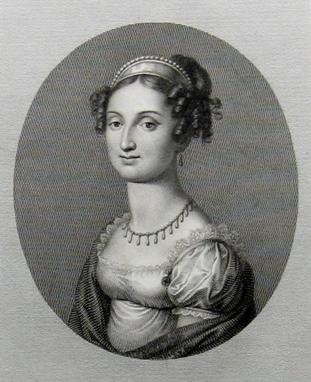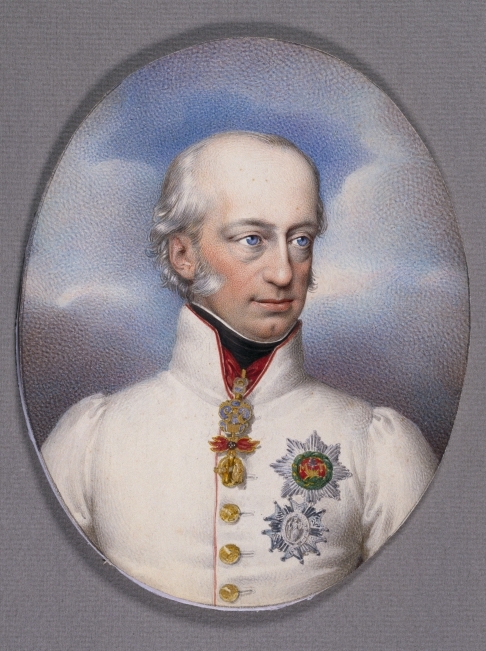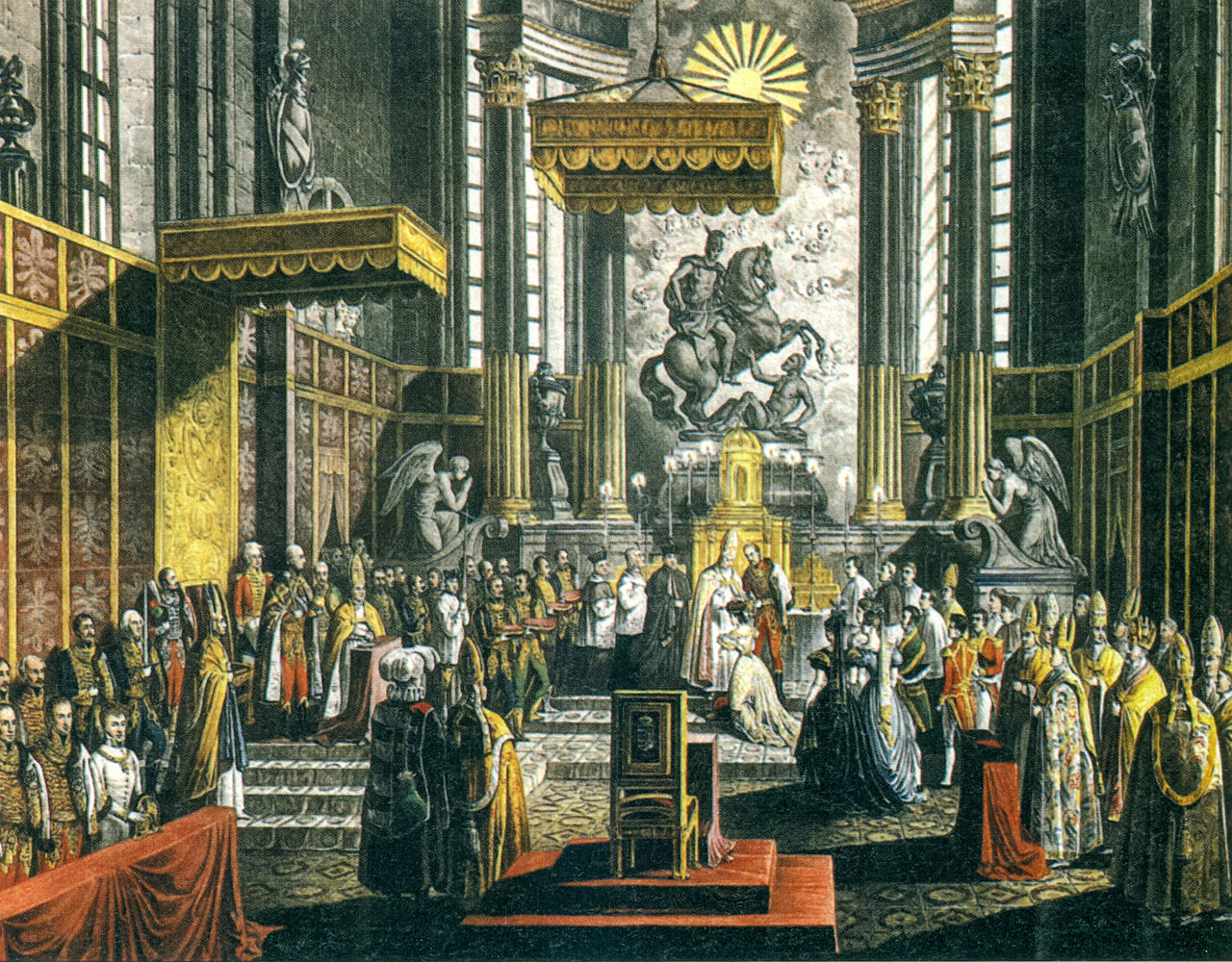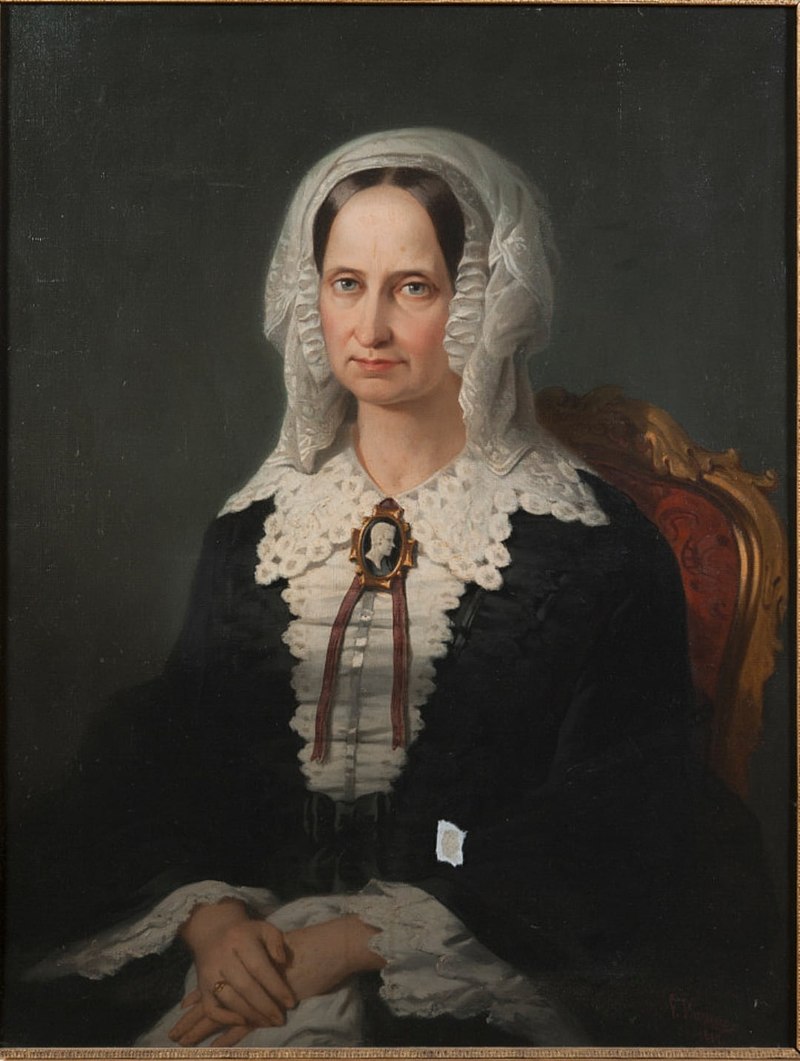by Susan Flantzer
© Unofficial Royalty 2021
The Grand Duchy of Tuscany was located in present-day northwest Italy. It existed, with a few interruptions, from 1569 – 1859. Tuscany was ruled by the de Medici family from 1434–1494 and from 1512 until the extinction of its senior branch in 1737. In 1569, Pope Pius V elevated Tuscany to a Grand Duchy and Cosimo I de’ Medici became its first Grand Duke.
In 1737, the House of Habsburg-Lorraine obtained control of the Grand Duchy of Tuscany. François Étienne, Duke of Lorraine exchanged the Duchy of Lorraine for the Grand Duchy of Tuscany. Stanisław I, the father-in-law of King Louis XV of France, had abdicated the throne of Poland in 1736 and now became the Duke of Lorraine.
Except for a period of thirteen years from 1801 – 1814 during the French Revolutionary Wars and Napoleonic Wars, the House of Habsburg-Lorraine retained the Grand Duchy of Tuscany until Tuscany was annexed to the Kingdom of Sardinia in 1860, as a part of the unification of Italy. In 1861, Vittorio Emanuele II, King of Sardinia was proclaimed the first King of the new, united Kingdom of Italy.
Two Grand Dukes of Tuscany were also Holy Roman Emperors: Francesco II Stefano, Grand Duke of Tuscany (reigned 1737 – 1765) also Franz I, Holy Roman Emperor (reigned 1745 – 1765) and Pietro Leopoldo I, Grand Duke of Tuscany (reigned 1765 – 1790) also Leopold II, Holy Roman Emperor (reigned 1790 – 1792).
********************

Leopoldo II, Grand Duke of Tuscany; Credit – Wikipedia
Leopoldo II, Grand Duke of Tuscany was the third of the five children and the second but the only surviving son of Ferdinando III, Grand Duke of Tuscany, and his first wife Luisa of Naples and Sicily. Given the names Leopoldo Giovanni Giuseppe Francesco Ferdinando Carlo, the future Grand Duke of Tuscany was born on October 3, 1797, in Florence, Grand Duchy of Tuscany, now in Italy. His paternal grandparents were Pietro Leopoldo I, Grand Duke of Tuscany, later Leopold II, Holy Roman Emperor, and Maria Luisa of Spain. His maternal grandparents were King Ferdinando IV of Naples and III of Sicily, later Ferdinando I, King of the Two Sicilies, and his first wife Archduchess Maria Carolina of Austria.
Leopoldo had four siblings:
- Archduchess Carolina Ferdinanda of Austria (1793 – 1802), died in childhood
- Francesco Leopoldo, Grand Prince of Tuscany (1794 – 1800), died in childhood
- Archduchess Maria Luisa of Austria (1798 – 1857), unmarried
- Archduchess Maria Theresa of Austria (1801 – 1855), married Carlo Alberto I, King of Sardinia, had three children including Carlo Alberto’s successor Vittorio Emanuele II, King of Sardinia, later King of Italy
Leopoldo lived much of his childhood in exile. In 1801, Napoleon conquered Tuscany and his father Ferdinando III was forced by the Treaty of Aranjuez to leave Tuscany to make way for the Kingdom of Etruria. Ferdinando III and his family went into exile in Vienna, Austria. In 1807, Napoleon dissolved the Kingdom of Etruria and integrated it into France. After Napoleon’s downfall in 1814, Tuscany was restored to Ferdinando III. While the family was in exile in Vienna, Leopoldo’s mother Luisa, aged 29, died in childbirth delivering a stillborn son on September 19, 1802.
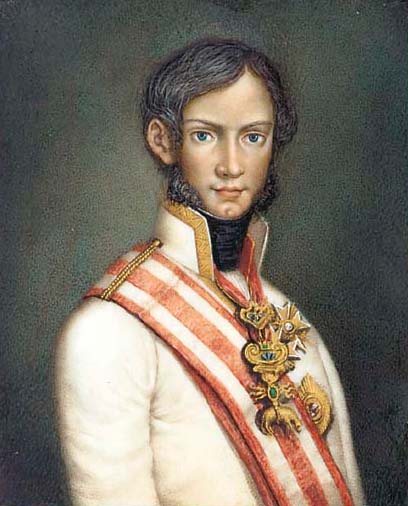
Leopoldo as a teenager; Credit – Wikipedia
Leopoldo was 17-years-old when his family returned to the Grand Duchy of Tuscany. He completed his studies having lessons in law, art, literature, and agriculture which greatly interested him. He studied and edited the writings of the physicist, astronomer, philosopher, mathematician Galileo Galilei and edited and published an edition of the poems of Lorenzo de’Medici which earned him his appointment as a member of the Accademia della Crusca, a Florence-based society of scholars of the linguistics and philology of the Italian language.

Maria Anna of Saxony, Leopoldo’s first wife; Credit – Wikipedia
On October 28, 1817, by proxy in Dresden, Kingdom of Saxony, now in the German state of Saxony and then in person at the Basilica of the Most Holy Annunciation in Florence, Grand Duchy of Tuscany, now in Italy, on November 16, 1817, Leopoldo married Princess Maria Anna of Saxony, daughter of Hereditary Prince Maximilian of Saxony and his first wife Caroline of Bourbon-Parma.

The three daughters of Maria Anna and Leopoldo; Credit – Wikipedia
Leopoldo and his first wife Maria Anna of Saxony had three daughters:
- Archduchess Carolina Auguste of Austria (1822 – 1841), died in her teens
- Archduchess Auguste Ferdinande of Austria (1825 – 1864), married Luitpold, Prince Regent of Bavaria
- Archduchess Maria Maximiliana of Austria (1827 – 1834), died in childhood
Upon his father’s death on June 18, 1824, Leopoldo became Grand Duke of Tuscany. During the first twenty years of his reign, Leopoldo focused on the domestic affairs of the Grand Duchy. Although he was subject to Austrian influence, he refused to adopt some Austrian methods, allowed some freedom of the press, and permitted many political exiles from other countries to live in Tuscany.
Leopoldo’s wife Maria Anna, aged 32, died on March 24, 1832, at the Royal Palace in Pisa, Grand Duchy of Tuscany, now in Italy, from tuberculosis which also caused the early death of her daughter Auguste. She was buried at the Basilica of San Lorenzo in Florence, Grand Duchy of Tuscany, now in Italy. Leopoldo greatly grieved his beloved wife but because he had three daughters and needed a male heir to ensure the succession. If Leopoldo did not have a male heir, the throne of the Grand Duchy of Tuscany would revert to Leopoldo’s Austrian Habsburg relatives.

Maria Antonia of Bourbon-Two Sicilies, Leopoldo’s second wife; Credit – Wikipedia
On June 7, 1833, at the chapel of the Royal Palace in Naples, Kingdom of the Two Sicilies, now in Italy, Leopoldo married his first cousin Maria Antonia of Bourbon-Two Sicilies, daughter of King Francesco I of the Two Sicilies and his second wife Maria Isabel of Spain.
Leopoldo and his second wife Maria Antonia had ten children including Leopoldo’s heir and the last Grand Duke of Tuscany, Ferdinand IV:
- Archduchess Maria Isabella of Austria (1834 – 1901), married her maternal uncle Francesco di Paola of Bourbon-Two Sicilies, Count of Trapani, had six children
- Ferdinando IV, Grand Duke of Tuscany (1835 – 1908) married (1) Anna of Saxony, had one daughter, miscarried another daughter due to typhoid fever and died four days later (2) Alicia of Bourbon-Parma, had ten children
- Archduchess Maria Teresa of Austria (1836 – 1838), died in childhood
- Archduchess Maria Cristina of Austria (1838 – 1849), died in childhood
- Archduke Karl Salvator of Austria (1839 – 1892), married Maria Immaculata of Bourbon-Two Sicilies, had ten children
- Archduchess Maria Anna of Austria (1840 – 1841), died in infancy
- Archduke Rainer of Austria (1842 – 1844), died in childhood
- Archduchess Maria Luisa of Austria (1845 – 1917), married Karl, Prince of Isenburg, had nine children
- Archduke Ludwig Salvator of Austria (1847 – 1915), unmarried, known for his scientific and regional studies of the Mediterranean region.
- Archduke Johann Salvator of Austria (1852 – reported lost at sea in 1890, officially declared dead in 1911), married opera dancer Ludmilla Stubel, there was speculation of Johann Salvator’s survival under the alias Johann Orth

Leopoldo and his family returning from exile in 1849; Credit – Wikipedia
The Revolutions of 1847/1848 caused Leopoldo to enact a constitution but it was not enough for the radical forces who wanted to completely eliminate Austrian influence. In January 1849, Leopoldo left Florence when a provisional republican government was formed. However, the republican government was short-lived due to a counter-revolution by Austrian troops and Leopoldo was able to return to Florence,

Leopoldo in 1860; Credit – Wikipedia
In 1859, the Grand Ducal family was forced to flee Florence because of the wars caused by the Italian unification movement, and the family took refuge in Austria. On July 21, 1859, Leopoldo II abdicated in favor of his son Ferdinand IV who was Grand Duke of Tuscany in name but never really reigned. The Grand Duchy of Tuscany was annexed to the Kingdom of Sardinia in 1860, as a part of the unification of Italy. In 1861, Vittorio Emanuele II, King of Sardinia was proclaimed the first King of the new, united Kingdom of Italy.

Schlackenwerth Castle; Credit – Wikipedia
The former Grand Ducal Family of Tuscany settled in the Kingdom of Bohemia, then part of the Austrian-Hungarian Empire ruled by Leopoldo’s Austrian Habsburg relatives. The family resided at Schlackenwerth Castle (link in German) in Schlackenwerth, a German-speaking town in the Kingdom of Bohemia, now Ostrov, in the Czech Republic. The people of the town treated Leopoldo with great respect and asked him to become the mayor of Schlackenwerth. Leopoldo accepted and while he was mayor, a great deal was accomplished. For instance, the museum, which was closed due to its run-down condition was renovated and reopened. Leopoldo arranged for children from poor families to attend school. In 1866, when a fire in Schlackenwerth created much destruction, Leopoldo used his private fortune to have the worst damage repaired.
In November 1869, Leopoldo and his wife Maria Antonia made a pilgrimage to Rome, and Leopoldo died there on January 29, 1870, at the age of 72. Initially, Leopoldo was buried in Rome at the Basilica of the Twelve Apostles (Santi Apostoli). In 1914, his remains were transferred to Vienna, Austria where they were interred at the Capuchin Church in the Tuscan Vault in the Imperial Crypt. Leopoldo’s second wife Maria Antonia survived him by twenty-eight years, dying at the age of 83 on November 7, 1898, at Schloss Ort in Gmunden, Austria. She was interred at the Capuchin Church in the Ferdinand Vault at the Imperial Crypt in Vienna, Austria.
This article is the intellectual property of Unofficial Royalty and is NOT TO BE COPIED, EDITED, OR POSTED IN ANY FORM ON ANOTHER WEBSITE under any circumstances. It is permissible to use a link that directs to Unofficial Royalty.
Grand Duchy of Tuscany Resources at Unofficial Royalty
Works Cited
- En.wikipedia.org. 2021. Ferdinand III, Grand Duke of Tuscany – Wikipedia. [online] Available at: <https://en.wikipedia.org/wiki/Ferdinand_III,_Grand_Duke_of_Tuscany> [Accessed 24 September 2021].
- En.wikipedia.org. 2021. Leopold II, Grand Duke of Tuscany – Wikipedia. [online] Available at: <https://en.wikipedia.org/wiki/Leopold_II,_Grand_Duke_of_Tuscany> [Accessed 27 September 2021].
- Flantzer, Susan, 2021. Ferdinando III, Grand Duke of Tuscany, Archduke of Austria. [online] Unofficial Royalty. Available at: <https://www.unofficialroyalty.com/ferdinando-iii-grand-duke-of-tuscany-archduke-of-austria/> [Accessed 27 September 2021].
- It.wikipedia.org. 2021. Leopoldo II di Toscana – Wikipedia. [online] Available at: <https://it.wikipedia.org/wiki/Leopoldo_II_di_Toscana> [Accessed 27 September 2021].
- Wheatcroft, Andrew, 1995. The Habsburgs. New York: Viking.
- Wilson, Peter, 2016. Heart of Europe – A History of the Holy Roman Empire. Cambridge: Belknap Press of Harvard University Press.


